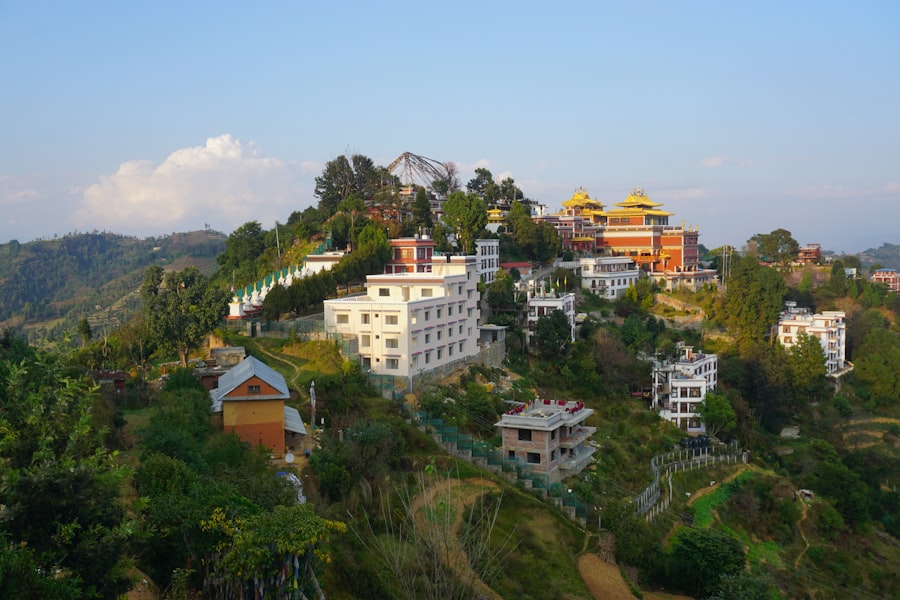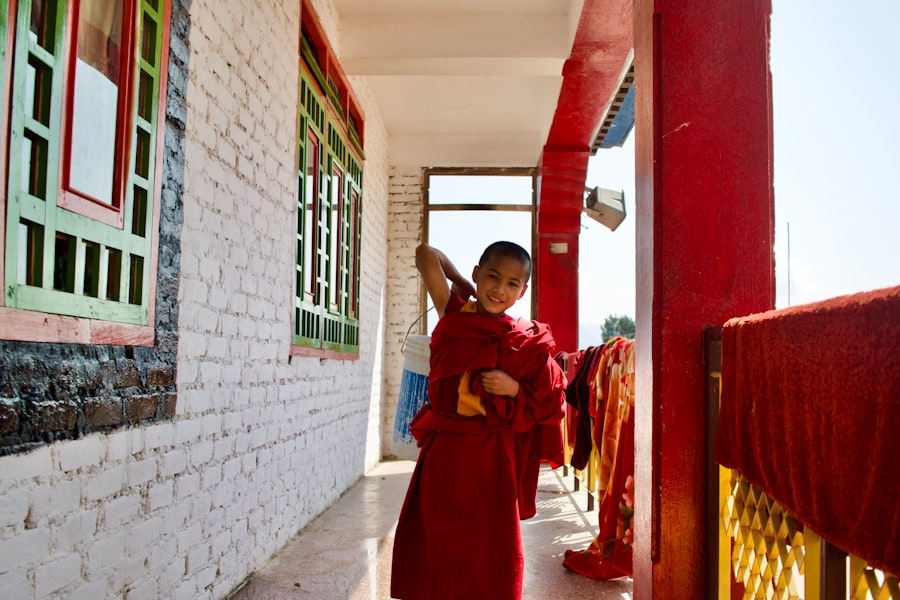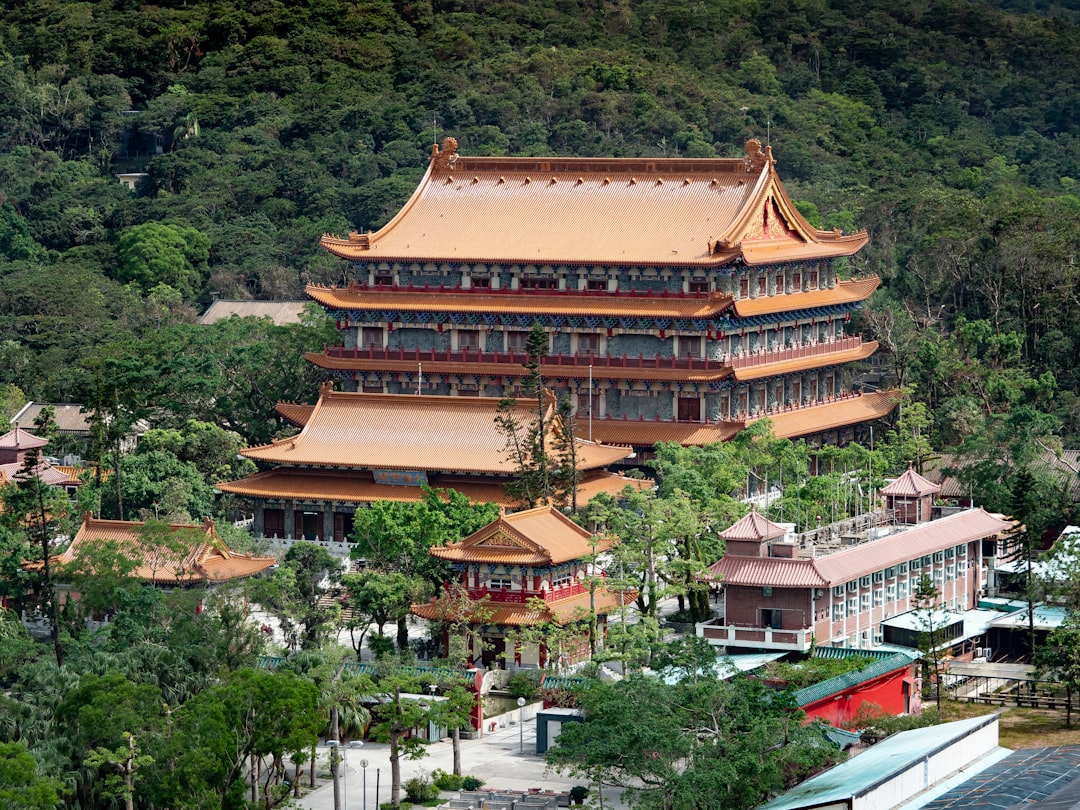Stupas hold a central place in Buddhist tradition, serving as both architectural marvels and profound symbols of the faith. Originating from the ancient Indian burial mounds, stupas evolved into sacred structures that encapsulate the essence of Buddhist teachings. They are often constructed to house relics of the Buddha or other revered figures, making them focal points for pilgrimage and veneration.
The very act of circumambulating a stupa is imbued with spiritual significance, as practitioners walk clockwise around the structure, symbolizing the path toward enlightenment. This ritualistic movement reflects the cyclical nature of existence, a core tenet of Buddhist philosophy. The architectural design of stupas is rich with meaning.
Typically, a stupa consists of a dome-shaped structure (the anda) that represents the universe, topped with a square base (the harmika) symbolizing the abode of the gods. The spire that rises from the harmika signifies the connection between the earthly realm and the divine. Each element of a stupa is meticulously crafted to embody various aspects of Buddhist cosmology and teachings.
For instance, the circular base represents the cycle of birth and rebirth (samsara), while the upward-reaching spire symbolizes the aspiration for enlightenment. Thus, stupas serve not only as physical structures but also as profound representations of Buddhist beliefs and aspirations.
Key Takeaways
- Stupas are significant in Buddhism as they represent the enlightened mind of the Buddha and serve as a place for meditation and worship.
- Chaityas, with their dome-shaped architecture, symbolize the universe and the path to enlightenment in Buddhism.
- Viharas play a crucial role in Buddhism as monastic dwellings where monks and nuns live, study, and meditate.
- Stupas, chaityas, and viharas hold historical and cultural importance as they are associated with the life and teachings of the Buddha and have been centers of Buddhist art and architecture.
- Stupas, chaityas, and viharas are integral to Buddhist practices and rituals, serving as places for pilgrimage, meditation, and religious ceremonies. They also symbolize the Three Jewels of Buddhism – the Buddha, the Dharma, and the Sangha.
- Preservation and conservation efforts for stupas, chaityas, and viharas are essential to safeguard these sacred sites and their cultural heritage for future generations.
Exploring the Architecture and Symbolism of Chaityas
The Design and Symbolism of Chaityas
The design of chaityas is characterized by their elongated, vaulted roofs and intricate carvings, which often depict scenes from the life of the Buddha or various Jataka tales. The symbolism embedded in chaityas is multifaceted. The vaulted ceiling is often interpreted as representing the heavens, while the stupa at its center symbolizes the Buddha’s presence.
Regional Variations and Core Elements
The architectural style of chaityas varies across regions, reflecting local influences while maintaining core elements that resonate with Buddhist symbolism. This arrangement creates a microcosm of the universe within the chaitya, inviting practitioners to contemplate their place within it.
The Use of Natural Light and Visual Aids
The use of natural light in chaityas is also significant; as sunlight filters through openings, it illuminates the stupa, symbolizing enlightenment breaking through ignorance. Furthermore, chaityas often feature elaborate carvings and sculptures that narrate Buddhist teachings, serving as visual aids for practitioners to deepen their understanding of the Dharma.
Viharas: Understanding the Role of Monastic Dwellings in Buddhism

Viharas are monastic complexes that play a crucial role in the life of Buddhist monks and nuns.
Traditionally constructed near stupas or chaityas, viharas serve as centers for learning and spiritual practice.
The layout of a vihara typically includes individual cells for monks, communal areas for dining and discussion, and meditation halls where practitioners can engage in solitary or group meditation. The significance of viharas extends beyond their physical structure; they embody the principles of community and support within Buddhist practice. Living in a vihara fosters a sense of belonging among monks and nuns, allowing them to share their experiences and insights on the path to enlightenment.
The communal lifestyle encourages discipline and mutual support, essential elements for those dedicated to spiritual development. Moreover, viharas often serve as educational institutions where monks can study sacred texts and engage in philosophical discussions, ensuring the transmission of Buddhist teachings across generations.
The Historical and Cultural Importance of Stupas, Chaityas, and Viharas
The historical significance of stupas, chaityas, and viharas cannot be overstated; they are integral to understanding the evolution of Buddhism across different cultures and regions. Stupas date back to the time of the Buddha himself, with some of the earliest examples found in India. As Buddhism spread to other parts of Asia—such as Sri Lanka, Southeast Asia, Tibet, and East Asia—these structures adapted to local architectural styles while retaining their core symbolic meanings.
This adaptability illustrates how Buddhism has interacted with diverse cultures, leading to a rich tapestry of artistic expression and spiritual practice. Culturally, these structures have served as focal points for community gatherings and celebrations. Festivals often revolve around stupas and chaityas, drawing devotees from far and wide to participate in rituals that reinforce communal bonds and shared beliefs.
Viharas have historically functioned as centers for education and social welfare, providing not only spiritual guidance but also practical support to local communities. The presence of these structures has shaped cultural identities in various regions, influencing art, literature, and social practices that continue to resonate today.
The Role of Stupas, Chaityas, and Viharas in Buddhist Practices and Rituals
In contemporary Buddhist practice, stupas, chaityas, and viharas continue to play vital roles in rituals and ceremonies. Stupas are often sites for pilgrimage; devotees travel long distances to pay homage to these sacred structures, believing that such acts can generate merit and foster spiritual growth. Rituals performed at stupas may include offerings of flowers, incense, or food, as well as chanting sutras or engaging in meditation.
These practices not only honor the Buddha but also reinforce a sense of connection among practitioners. Chaityas serve as venues for communal worship and meditation sessions. In many traditions, gatherings at chaityas involve chanting sessions led by monks or lay practitioners, creating an atmosphere conducive to collective spiritual experience.
The architectural design encourages participants to focus their attention on the stupa at its center, reinforcing the importance of mindfulness and concentration during practice. Viharas also facilitate various rituals; they often host ceremonies marking significant events in the Buddhist calendar or life milestones such as ordinations or memorials for deceased monks.
Preservation and Conservation Efforts for Stupas, Chaityas, and Viharas

Restoration Projects and Conservation Efforts
Various organizations—both governmental and non-governmental—are actively involved in restoration projects aimed at safeguarding these architectural treasures. One notable example is the restoration work undertaken at Sanchi Stupa in India, a UNESCO World Heritage Site renowned for its intricate carvings and historical significance. Efforts have focused on stabilizing the structure while preserving its artistic elements.
Protecting Frescoes and Ensuring Functional Spaces
Similarly, chaityas in places like Ajanta Caves have undergone extensive conservation work to protect their frescoes from deterioration caused by humidity and exposure to light.
Education and Community Engagement
In addition to physical preservation, there is an increasing emphasis on educating local communities about the importance of these structures. Workshops and outreach programs aim to raise awareness about their historical value and encourage active participation in conservation efforts. By fostering a sense of ownership among local populations, these initiatives help ensure that stupas, chaityas, and viharas continue to thrive as living symbols of Buddhist heritage while adapting to contemporary needs.
If you are interested in exploring the relationship between sociology and other social sciences, you may find the article The Relationship of Sociology with Other Social Sciences to be a fascinating read. This article delves into how sociology interacts with disciplines such as psychology, anthropology, and economics, shedding light on the interconnected nature of the social sciences. It provides valuable insights into how different fields of study can complement each other and contribute to a more holistic understanding of human society.
FAQs
What are Stupas, Chaityas, and Viharas?
Stupas are dome-shaped structures that contain Buddhist relics or represent the enlightened mind of the Buddha. Chaityas are Buddhist prayer halls or shrines, while Viharas are Buddhist monasteries or dwellings for monks.
What is the significance of Stupas, Chaityas, and Viharas in Buddhism?
Stupas, Chaityas, and Viharas are important symbols and structures in Buddhism. They serve as places for meditation, worship, and learning, and are considered sacred by Buddhists.
Where are Stupas, Chaityas, and Viharas found?
Stupas, Chaityas, and Viharas can be found in various Buddhist-majority countries such as India, Nepal, Sri Lanka, Thailand, Myanmar, and others. They are also present in regions where Buddhism has spread, such as parts of China, Japan, and Korea.
What is the history of Stupas, Chaityas, and Viharas?
Stupas, Chaityas, and Viharas have a long history in Buddhism, dating back to the time of the Buddha himself. They have evolved over the centuries and have been influenced by different cultural and architectural styles.
How are Stupas, Chaityas, and Viharas used in modern times?
In modern times, Stupas, Chaityas, and Viharas continue to be used for religious and spiritual purposes. They are also popular tourist attractions and are often visited by people interested in Buddhist art, architecture, and history.






















+ There are no comments
Add yours